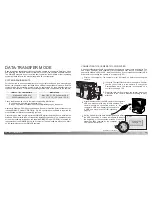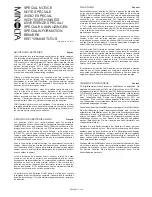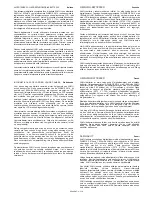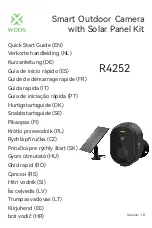
Shutter will
not release.
“000” is dis-
played on the
frame counter.
CompactFlash card is full
and unable to store an
image at the image-quali-
ty or image-size setting
on the camera.
Insert a new CompactFlash
card (p. 18), delete some
images (p. 76), or change the
image-quality or image-size
setting (p. 44).
No-card warn-
ing appears on
the monitors.
No CompactFlash card in
the camera.
Insert a CompactFlash card
(p.18).
Pictures are
not sharp.
Focus signal is
red.
Subject is too close.
Make sure the subject is within
the autofocus range (p. 26) or
use the macro mode (p. 28).
The camera is in macro
mode.
Cancel the macro mode setting
(p. 28).
A special situation is pre-
venting the autofocus sys-
tem from focusing (p.27)
Use the focus-lock function to
focus on an object at the same
distance as the subject (p. 26)
or use manual focus (p. 59).
Pictures are
taken indoors
or in low-light
situations with-
out flash.
Slow shutter speeds
result in blurred images
when the camera is hand-
held.
Use a tripod, change the cam-
era sensitivity to a higher set-
ting (p. 62), or use the flash (p.
30).
Continuous
advance does
not work.
The image quality is set to TIFF.
Change the image-quality set-
ting (p. 44).
While using
flash, the pic-
tures are too
dark.
The subject is beyond the flash range (p.
62).
Move closer to the subject or
change the camera sensitivity
to a higher setting (p. 62).
Problem
Symptom
Cause
Solution
Shutter speed and
aperture combination is
extremely under or over-
exposing the live image.
Change the shutter speed or
aperture value until an image
appears on the monitor (p. 57).
Shooting data
is displayed,
but live image
is entirely
black or
white.
Camera set to
manual-
exposure
mode (M).
104
105
A
PPENDIX
Problem
Symptom
Cause
Solution
“Err” dis-
played on the
data panel.
Turn off the camera and remove the batteries or unplug the external power
supply. Wait for the message to disappear before reinserting the batteries or
plugging in the power supply. If the camera is hot, allow it to cool before
removing the batteries and Compactflash card.
If the camera does not function normally, turn it off, remove and reinsert the batteries, or
unplug and reconnect the AC adapter. Always turn the camera off using the mode dial
otherwise the CompactFlash card may be damaged and camera settings reset. The
camera temperature rises with extended periods of use. Care should be taken to avoid
burns when handling the camera, batteries, or CompactFlash card.
When using Ni-MH batteries, clean both battery terminals with dry cloth to wipe off any
dirt or residue. Because of the sophisticated computer system, the camera critically
monitors power levels. If the battery terminals are dirty, the camera may give a false low-
battery warning. If battery performance is unusually low, wipe the battery terminals with
a clean, dry cloth.
Ni-MH battery performance will decrease if the batteries are often recharged before they
have been fully discharged. Completely exhaust the Ni-MH batteries using the camera
before charging.
ABOUT NI-MH BATTERIES
Summary of Contents for DiMAGE S414
Page 1: ...INSTRUCTION MANUAL E...







































